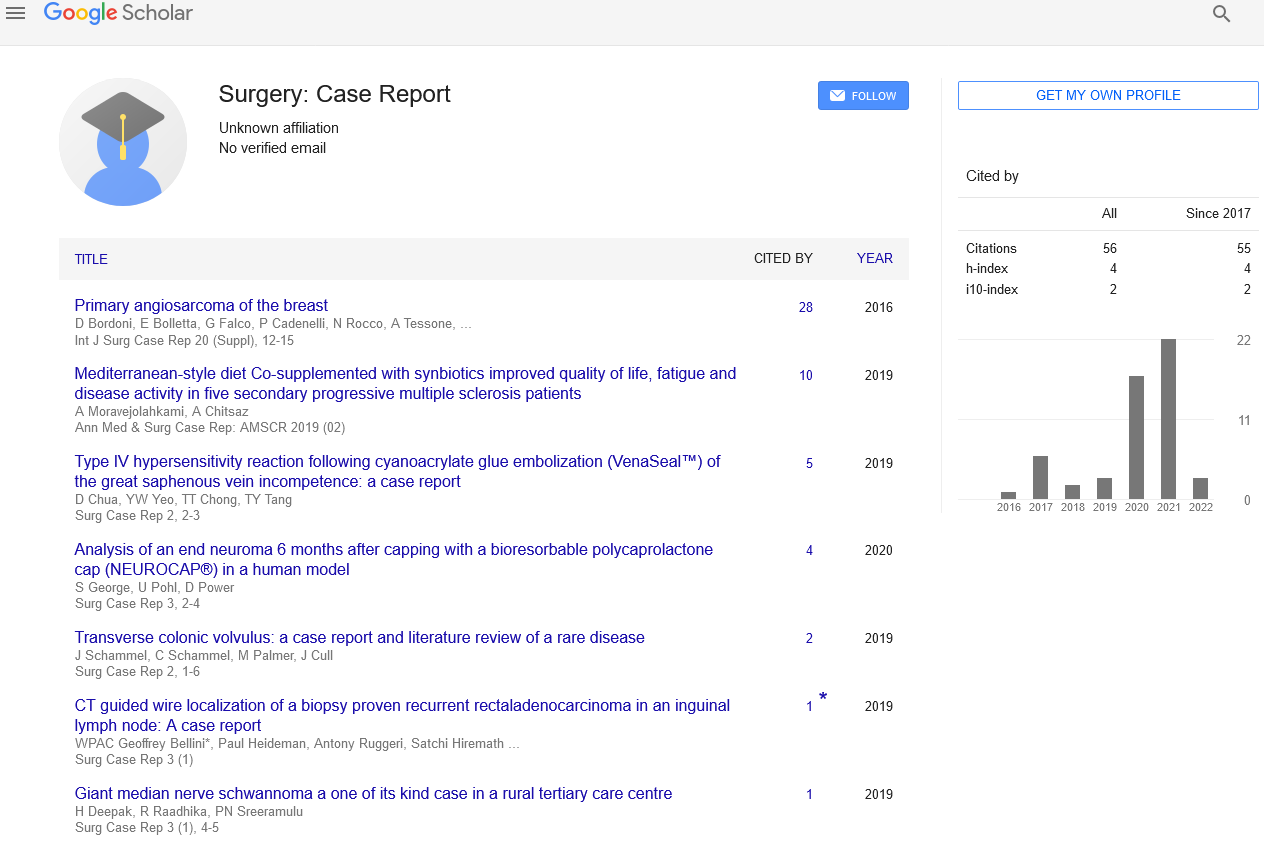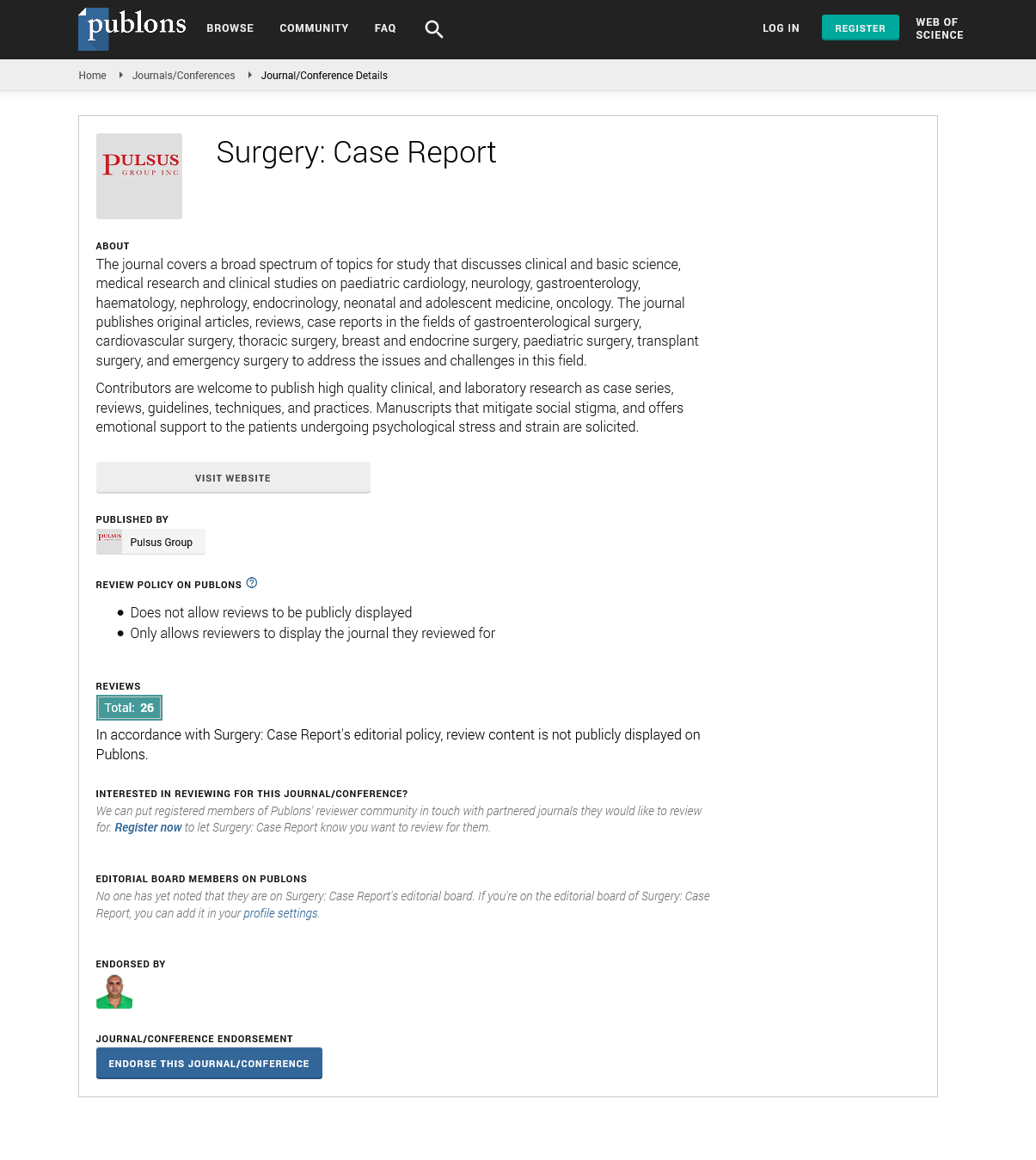Skin Grafting
Received: 06-Jan-2021 Accepted Date: Jan 21, 2021; Published: 25-Jan-2021
Citation: Spandana V. Editorial Note for Skin Grafting. Surg Case Rep 2021;5:1.2
This open-access article is distributed under the terms of the Creative Commons Attribution Non-Commercial License (CC BY-NC) (http://creativecommons.org/licenses/by-nc/4.0/), which permits reuse, distribution and reproduction of the article, provided that the original work is properly cited and the reuse is restricted to noncommercial purposes. For commercial reuse, contact reprints@pulsus.com
Editorial
Skin grafting is a method most commonly used for wounds on skin in a variety of clinical situations, such as defects after oncologic resection, scar contracture release, burn reconstruction, hair restoration, vitiligo, nippleareola reconstruction, traumatic wounds, and congenital skin deficiencies. Even though currently less preferred than flap closures, grafting can create a good cosmetic result. Skin grafts, in compare to flaps, are completely detached from their blood supply, whereas flaps remain attached to a blood supply through a pedicle. This technique is less technically tough but can be more time- consuming as the process generates a second surgical site. Skin grafts can be distributed into several categories based on the alignment of the graft with each type of graft having unique threats and signs. Splitthickness skin grafts (STSG) are collected of the epidermis and a superficial portion of the dermis. Full-thickness skin grafts (FTSG) comprise of both the full epidermis and dermis. Composite grafts have skin and another type of tissue, regularly cartilage. FTSGs are the most frequently used graft in dermatology. This can provide an excellent tissue equal to the host site & heal through slight scarring and contracture. Composite grafts similarly require a high metabolic demand and naturally are only used in the nose and ear in situations wherever cartilage also needs to be replaced. STSGs are classically less cosmetically attractive because of a non-existence of adnexal structures and colour mismatch. There is also an essential risk of contracture with STSG. Split-thickness graft donor sites also be likely to be more hurting for the patient related to FTSG. The procedure for Skin grafting:
Skin harvesting
In harvesting FTSGs, commonly the scalpel is used. All of the dermis is involved in the graft using as little subcutaneous fat as potential. Another way is to take out the fat with scissors after harvesting skin together with fat. The donor site is then sealed mostly. STSGs can be harvested by drum dermatome, free-hand dermatome and power-driven dermatome.
The donor site of STSGs is enclosed by the wound dressing materials to moisturize the surroundings of the wound. There is an exclusive method called “Suction Blister Therapy,” which is repeatedly used in the cure of vitiligo. With this technique, only the epidermis is harvested, and epidermal cells containing pigment cells are grafted to the smooth-shaven surface of the vitiligo.
Graft preparation
When the fault to be grafted is widespread or has complicated surfaces, split-thickness skin grafts can be engaged to expand. This meshing process not only rises the surface area that can be enclosed by the harvested graft then as well allows the graft to observe better to a convoluted wound. The disadvantages of engaged grafts are wounds with a checkerboard look, which leaves a visually less attractive scar, and the possibility of affecting more contraction of the wound. Also, it is essential to note that engaging a skin graft does not inhibit postoperative bleeding. The only way to avoid graft loss from a hematoma is the accomplishment of haemostasis.
Graft fixation
In graft fixation, the first step is to spread over a non-adherent dressing. Then, a dressing should be applied to the graft with gentle pressure (10– 20 mmHg) to stimulate graft observance without affecting pressure necrosis. “Tie-over dressing” is beneficial, because it reduces the risk of hematoma or seroma development and also avoids shearing forces from outside. If a mesh skin graft is working to be applied, or if a secondary process is planned over the good granulation tissue on the surface of the wound bed, it may be adequate to place cotton balls or press fluffed gauze onto the wound after sealing the graft. When the tie-over dressing is needed at an infectious site, it is better to eradicate the fixing joint earlier on 2-3 days after operation and see the grafted skin.
The furthermost common complications by means of skin grafts are skin pigmentation and skin graft contraction. Hydroquinone cream is beneficial for treating transient pigmentation. Skin graft contraction is of specific concern when split-thickness skin grafts are used on the flexor side of joints or in the palm. In those cases, restriction with a splint or other device is very essential.






